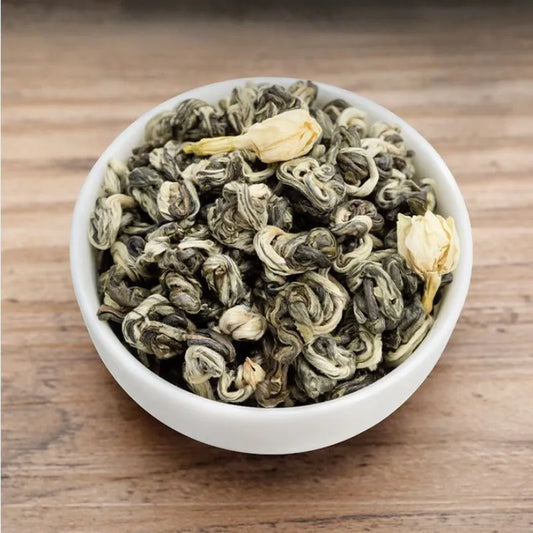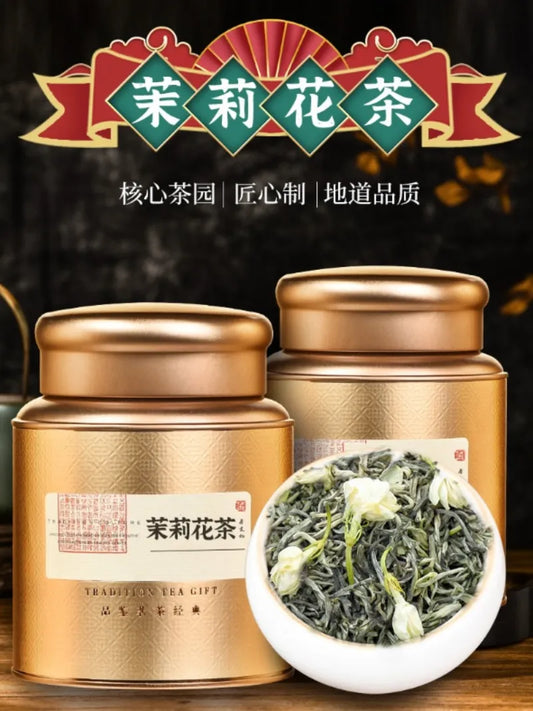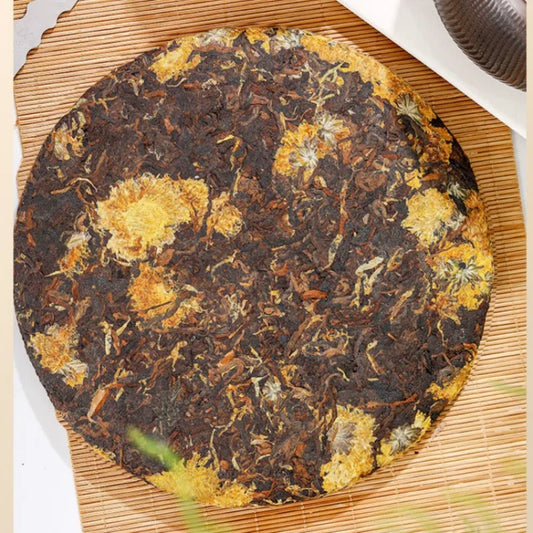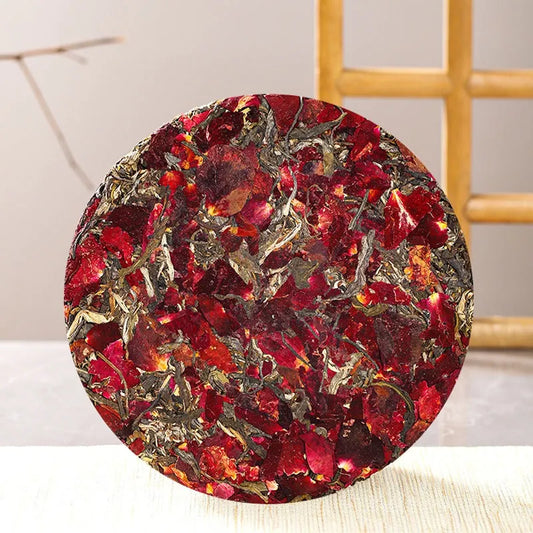Chinese Flower Tea: Fragrance Infused in Tea Leaves – A Tasting Guide & Cultural Appreciation
1. Introduction: Tea as the Bone, Flower as the Soul
Chinese flower tea, also known as scented tea or "xiangpian" (香片), is a unique category in traditional tea culture. It is crafted by layering tea leaves (green, black, or oolong) with fresh flowers through a meticulous scenting process, allowing the tea to absorb the floral essence. The result is a harmonious blend where "tea forms the backbone, and flowers impart the spirit."
Key Origins:
l Fuzhou, Fujian (Birthplace of jasmine tea, a UNESCO Intangible Cultural Heritage)
l Yunnan (Rose pu-erh, osmanthus black tea)
l Anhui (Huangshan Gongju chrysanthemum tea)
l Hengzhou, Guangxi (World’s largest jasmine flower base)
2. Classic Varieties & Flavor Profiles
-
Jasmine Tea
l Representative Types: Fuzhou Jasmine Silver Needle, Bitan Piaoxue
l Characteristics: Fresh, sweet, and intensely floral with a lingering aftertaste. Praised as "the finest fragrance under heaven."
l Pairing: Light snacks (e.g., mung bean cake) or enjoyed solo.
-
Rose Tea
l Representative Types: Pingyin Rose Black Tea, Mo Rose
l Characteristics: Rich, velvety, and naturally sweet, high in anthocyanins. Ideal for women’s wellness.
l Modern Twist: Brew with honey and milk for rose milk tea.
-
Osmanthus Oolong
l Representative Types: Anxi Osmanthus Tieguanyin
l Characteristics: Toasty oolong base with a delicate osmanthus aroma. Excellent cold-brewed.
-
Chrysanthemum Tea (Herbal infusion)
l Representative Types: Hangzhou White Chrysanthemum, Bud Chrysanthemum
l Benefits: Cools the body and soothes the eyes. Best served iced with rock sugar in summer.
3. The Art of Tasting: A 4-Step Guide
-
Observe
l High-quality flower tea has even, unbroken leaves with natural petals (e.g., jasmine tea may show dried blossoms).
-
Smell
l Hot Aroma: Balanced floral and tea notes, no artificial sharpness.
l Cold Aroma: A lingering, pleasant scent in the empty cup indicates premium tea.
-
Admire the Liquor
l The brew should be clear and bright (e.g., jasmine tea: pale gold; rose tea: reddish-amber).
-
Savor
l Smooth texture, floral sweetness without overpowering the tea, and a clean finish.
4. Cultural Significance
l Historical Roots: Flower-scented tea dates back to the Song Dynasty; Empress Dowager Cixi adored double-scented jasmine tea.
l Wellness Wisdom: Traditional Chinese medicine values flower teas for balancing qi—chrysanthemum for cooling, rose for calming.
Final Note:
Chinese flower tea is a poetic synergy of scent and flavor. Whether sipping jasmine at dawn or unwinding with rose tea at dusk, each cup carries centuries of craftsmanship. From petal to palate, it’s a celebration of nature’s artistry and Eastern serenity.

![Premium Guangxi [Pearl Jasmine] Green Tea Canned Gift Set 250/500g - YIQIN TEA HOUSE | yiqinteahouse.com | flower tea, pearl jasmine, tea](http://yiqinteahouse.com/cdn/shop/files/premium-2024-guangxi-pearl-jasmine-green-tea-canned-gift-set-250500g-yiqin-tea-house-yiqinteahouse-com-1.jpg?v=1723262858&width=533)

![Guangxi [Jasmine Tea] Strong Flora Aroma Green Tea Gift Set 500g - YIQIN TEA HOUSE | yiqinteahouse.com | flower tea, jasmine tea, tea](http://yiqinteahouse.com/cdn/shop/files/guangxi-jasmine-tea-strong-flora-aroma-green-tea-gift-set-500g-yiqin-tea-house-yiqinteahouse-com-1.png?v=1723259979&width=533)

![2022 Spring Yunnan Shu Puer Tea Cake [Chrysanthemum] - YIQIN TEA HOUSE | yiqinteahouse.com | dark tea, pu-er, puer, shu puer, tea](http://yiqinteahouse.com/cdn/shop/files/2022-spring-yunnan-shu-puer-tea-cake-chrysanthemum-yiqin-tea-house-yiqinteahouse-com-1.jpg?v=1723794241&width=533)

![2022 Spring Yunnan Sheng Puer Tea Cake [Red Rose] - YIQIN TEA HOUSE | yiqinteahouse.com | dark tea, pu-er, puer, sheng puer, tea](http://yiqinteahouse.com/cdn/shop/files/2022-spring-yunnan-sheng-puer-tea-cake-red-rose-yiqin-tea-house-yiqinteahouse-com-1.jpg?v=1723794180&width=533)

